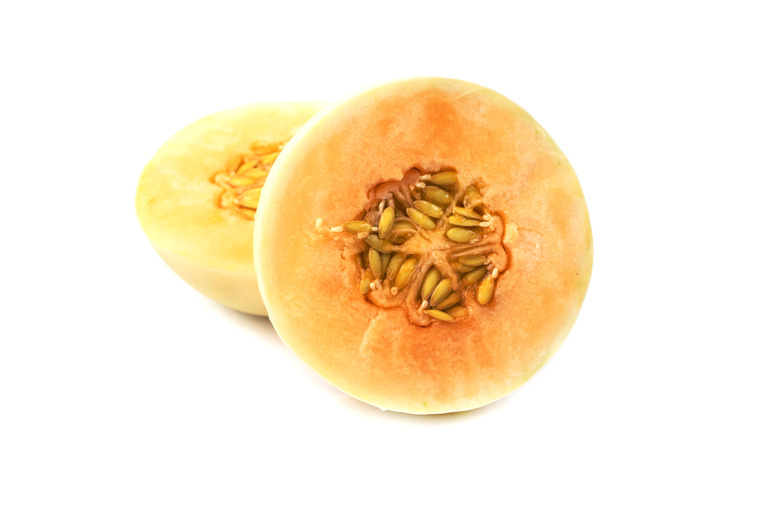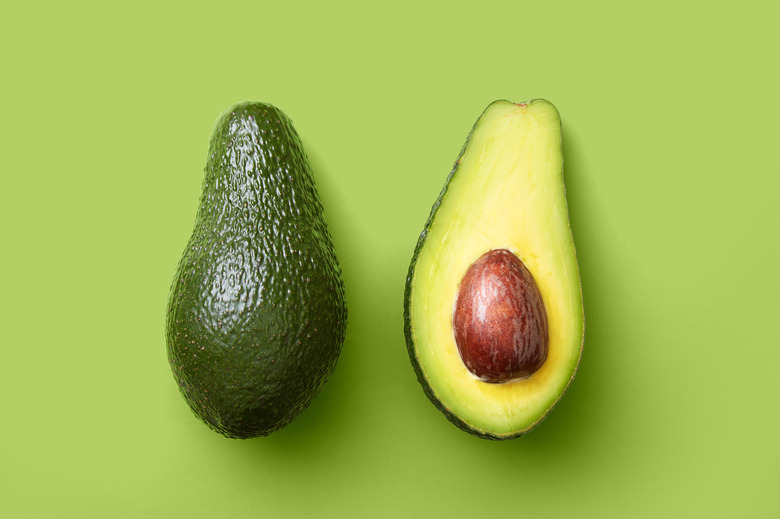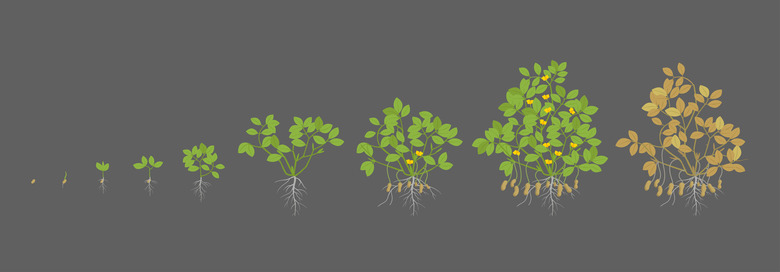Fruits That Grow In The Ground
If you ask a botanist to name common fruits that grow in the ground, as in underground, you will likely get a single answer: peanuts. Yes, a peanut is a legume, but it's also a fruit, by botanical definition. And there are lots of other familiar foods that most of us call vegetables that are actually fruits, including tomatoes, cucumbers, eggplants, and green beans. There are also other "nuts" that are actually fruits—walnuts and chestnuts among them—as well as a few "seeds," such as sunflower seeds. But what's common among all of these fruits, except one, is that they grow above the ground (or on top of the ground). Only the peanut grows in the ground, and that's why some cultures call it a groundnut.
What Is a Fruit?
What Is a Fruit?
All fruits start out as flowers. The flower contains an ovary, the reproductive part of the plant. The ovary itself contains one or more ovules, and one of the ovary's main jobs is to protect the ovules until they turn into seeds. As the flower develops, the ovary becomes swollen and fleshy in order to protect its ovules. This fleshy part, whether it's soft, hard, dry, or even shell-like, is the part that we call fruit. And the seeds inside of this fruit are the ovules.
One of the ovary's other main jobs is to aid in the dispersal of the ovules, or seeds. This is why many fruits are brightly colored and good to eat: they invite wildlife to come and eat them, then they are digested and the seeds (which aren't digested) are pooped out somewhere away from the mother plant, thus dispersing the seeds. Humans, which aren't so useful for dispersal in the modern world, like fruit for the same reasons animals do. Fruits can also be dispersed by simply falling to the ground or other via other modes of travel.
In short, a fruit is a fleshy plant structure that follows the flower in a plant's life cycle, and which contains the plant's seed inside it. A fruit is the plant's ovary, as distinct from its roots, stem, or leaves.
Why Are Some Fruits Called Vegetables
Why Are Some Fruits Called Vegetables
While fruits are clearly defined in the botanical world, vegetables are not. For some, the definition of a vegetable is the edible or nutritious part of a plant. For others (including most laypeople), a vegetable is any plant that is edible but is not a fruit—or a nut, seed or spice. This line of thinking seems to be supported by the United States Supreme Court, which ruled in 1893 that a tomato is a vegetable and not a fruit. However, this legal distinction was made to impact tariffs on the popular food rather than to serve as an edict on botanical classification.
Perhaps even more confusing is the common gardeners' use of "fruit" to mean the desired yield or product of horticulture. Under this usage, a zucchini, a beet root, a potato and a watermelon are all equally considered fruits. Similarly, any berries that grow on any type of plant, whether they're edible or not, are also fruits.
The bottom line is that vegetables are much harder to define than real fruits. A fruit is an ovary and its contents. A vegetable can come from many different parts of plants, including leaves, stalks, roots, tubers, rhizomes and seeds, among other parts.
Fruits (the Edible Parts) That Grow Underground
Fruits (the Edible Parts) That Grow Underground
Following the gardener's or horticulturist's usage of the term fruit—the part that you eat and often the sole reason the you are growing the plant—there are many common foods that grow in the ground. (And now you know that only one of them is actually a fruit.)
-
Peanuts: Peanuts grow from flowers near the bottom of the aboveground
portion of the plant. The fertilized ovaries (the peanuts) grow downward into
the soil, where they mature. They are harvested by pulling up the entire plant
and pulling off the peanuts from the root area of the plant. -
Carrots and beets: The part of a carrot or a beet that you
eat is actually the plant's root, or more specifically, its tap root. Another vegetable
in this family is the parsnip. Carrots, beets and parsnips are commonly referred
to a root vegetables, which is accurate. However, while most root vegetables grow
underground, the part you eat is not always the root. -
Onions, garlic and leeks: Some root vegetables come from the
bulb of the plant, as is the case with onions, garlic, leeks and fennel. Leeks
and fennel also have edible leaves, as do some onions, such as scallions (green
onions). The bulbs grow underground, while the leaves form a stalk-like
structure that emerges from the ground. -
Ginger: The part the ginger plant that you eat is a fleshy
tuber rather than the plant's root, despite the common term "ginger root." Another
edible plant in the same family as ginger is tumeric, but in this case, the plant's
rhizome is more useful than its root. -
Potatoes: The "fruit" of the potato is also a fleshy tuber,
like the fruit of ginger. A tuber is like an underground storage tank of food
and water for the plant, providing nutrition to the plant in times of drought. Roots
grow below the tuber, and shoots grow above. Other edible tubers include yams,
sweet potatoes, cassava and taro.



